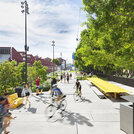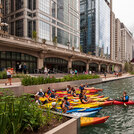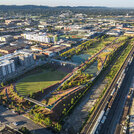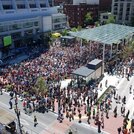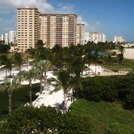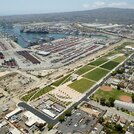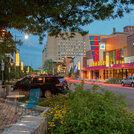Case Study Brief
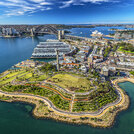
Barangaroo Reserve
Sydney, New South Wales, Australia
“Textured Transition: The first principle of DeafScape design is the creation of textured transition areas to provide cues between sidewalks, planting areas, and streets. These subtle tactile cues are crucial for the Blind and DeafBlind communities; they differentiate between edges of the ground plane and thresholds and offer safety cues along edges of curbs. They can be tangibly felt by feet, canes, and wheels as a form of warning along curbs, particularly when streets are tabled flush with sidewalks. Barangaroo Reserve’s linear textured areas with tactile and visual contrast help users to navigate the site - subtly and beautifully - particularly around the site’s edges. The texture may serve as an informal safety mechanism as well, protecting Blind and low-vision site users from falling into the water. ”


